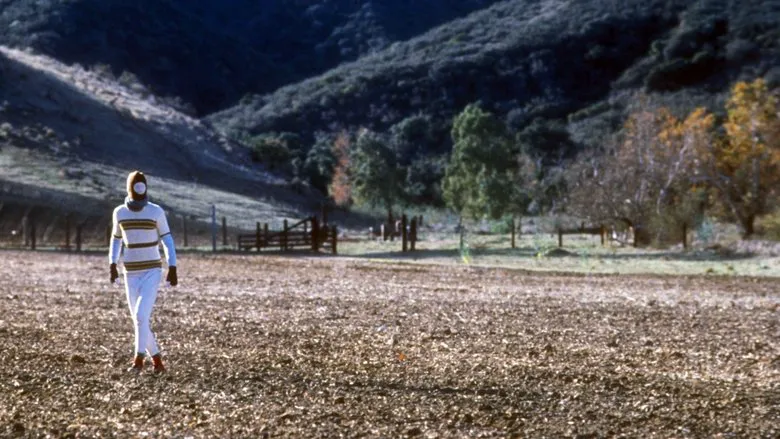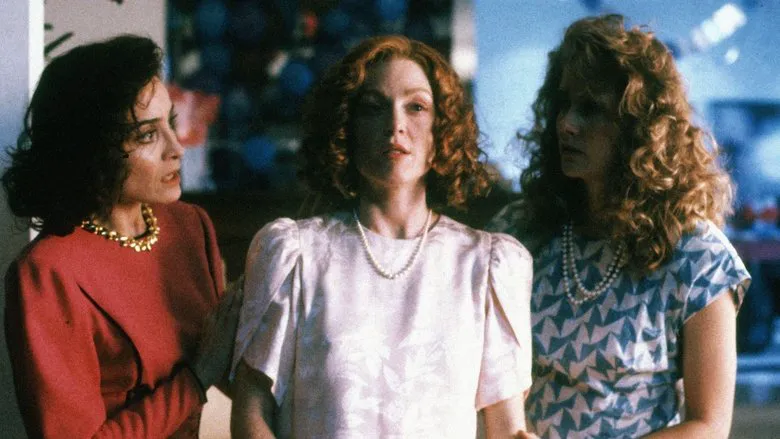Beyond the Perfect Facade: Unearthing the Truth Behind Todd Haynes’ ‘Safe’
In the nuanced world of psychological dramas, Todd Haynes’ 1995 masterpiece, ‘Safe,’ stands as a chilling, prescient testament to the insidious dangers hidden beneath the veneer of suburban perfection. A film that quietly disarms its audience before lodging itself deep within their consciousness, ‘Safe’ explores the terrifying unraveling of an individual in the face of an inexplicable illness, all while subtly critiquing the societal pressures that can dictate our very well-being. This isn’t just a film about sickness; it’s a profound journey into identity, conformity, and the desperate search for a refuge that may not exist.
A Director’s Radical Vision: Crafting the Unseen Threat
Todd Haynes, known for his distinctive and often challenging cinematic voice, imbues ‘Safe’ with his signature blend of clinical observation and profound empathy. Inspired in part by real-life accounts of “20th-century illness” and the growing awareness of environmental sensitives, Haynes deliberately chose a narrative that resists easy categorization. He eschews traditional plot beats for a more unsettling, meditative progression, reflecting Carol White’s disorienting descent. The genius of Haynes’ direction lies in his ability to make the unseen terrifying – the very air, fabrics, and foods of modern life become potential aggressors. There are no jump scares, but a pervasive sense of dread that creeps in slowly, mirroring Carol’s own creeping symptoms. The film’s meticulous pacing and sparse dialogue force the audience to inhabit Carol’s unraveling internal world, making her isolation feel palpable.
Julianne Moore’s Searing Transformation: A Star is Born
At the heart of ‘Safe’ lies a truly transformative performance by Julianne Moore, a role that cemented her status as one of her generation’s most formidable talents. Her portrayal of Carol White is nothing short of masterful, capturing the agonizing evolution from a superficially perfect Los Angeles housewife to a fragile, almost spectral figure consumed by her mysterious ailment.
Moore meticulously peels back layers of denial and forced cheerfulness, revealing a woman slowly dissolving from within. She convey’s Carol’s profound loneliness, confusion, and fear not through grand gestures, but through subtle shifts in posture, vacant stares, and a voice that grows increasingly faint. The physical toll of the illness on Carol is heartbreakingly rendered by Moore, conveying the chronic nausea, fatigue, and intense environmental sensitivities that leave her debilitated. It’s a performance of immense vulnerability and precision, making Carol’s desperate plight terrifyingly real and deeply empathetic.

The Chilling Aesthetic: A World of Subtle Infection
Beyond its compelling narrative and central performance, ‘Safe’ creates its unsettling power through brilliant cinematic choices. The film’s aesthetic is cold, clean, almost sterile, initially reflecting the sanitized suburban world Carol inhabits. However, as her illness progresses, this very cleanliness becomes a source of anxiety, as environmental triggers lurk unseen everywhere. Haynes uses wide shots and an often-static camera to emphasize Carol’s isolation within her surroundings, even amidst her own family.
The pristine suburban homes, the perfectly manicured lawns, and the bland consumer goods begin to feel oppressive rather than comforting. This visual language cleverly reinforces the film’s broader commentary on “environmental sickness” – not just from pollutants but from the very manufactured nature of modern life and the pressures it imposes. The slow, deliberate tracking shots often maintain a clinical distance, mirroring the perplexing nature of Carol’s affliction and the medical community’s inability to provide concrete answers.

A Deeper Sickness: Societal Pressures and the Search for Meaning
‘Safe’ expands beyond the mere physical, delving deep into the emotional and psychological underpinnings of Carol’s condition. The film masterfully critiques the often-unspoken societal expectation for women to conform to certain standards of behavior and beauty, portraying the “perfect” suburban family as a meticulous facade. Carol’s initial contentment is revealed to be a fragile illusion, susceptible to the external and internal pressures she can no longer ignore.
Her journey is one of increasing withdrawal from this demanding world, culminating in her escape to Bayside, England, to seek alternative healing from Dr. Herbert Mears. This shift, initially portrayed as a desperate pursuit of a cure, becomes a profound metaphor for Carol’s quest for self-discovery and authenticity. In this new-age community, where her illness is seen as a manifestation of emotional distress, Carol is forced to confront the suppressed feelings and personal unhappiness that may lie at the true root of her suffering. The film leaves the audience to ponder the ambiguity of her recovery: is it physical, psychological, or simply a new form of compliance?

The Enduring Legacy of ‘Safe’
Upon its release, ‘Safe’ was highly debated, often dividing audiences with its enigmatic conclusion and its refusal to provide easy answers. However, time has solidified its place as a groundbreaking work that transcends its initial categorization. Its daring exploration of environmental anxieties, patriarchal pressures, psychological vulnerability, and the elusive nature of ‘wellness’ ensures its status as a timeless and essential piece of cinema.
‘Safe’ challenges viewers to look beyond the surface, to question the very air we breathe and the environments we inhabit, both physical and emotional. It’s a powerful, empathetic, and profoundly unsettling film that lingers long after the credits roll, making us reflect on our own vulnerabilities and the true meaning of finding a safe space in an uncertain world.
